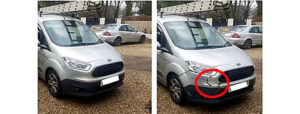Could it be time you take another peek at this industry for your own shop, parts outlet, or distributorship? The global wheel market is $45 billion
Many years ago I had the amazing opportunity to meet a famous management consultant by the name of Peter Drucker at an industry meeting. He was every bit as amicable and classy as I had heard and there was no denying his passion. And I have always remembered his quote, “The best way to predict the future is to create it.”
Now you wonder, what does this have to do with aftermarket custom wheels? Well, during the pandemic all industries were hurting except pharma and medical. This was really true about the custom aftermarket wheel business. The fact that it is regaining health quickly is testament to the managers and employees of the wheel companies and distributors. Even as distribution chains petered out, costs went through the roof and fear was settling into some corners, but they kept clear heads and planned. And along the way they created a healthy aftermarket for themselves.
According to studies, the wheel market — both OE and IAM — globally is about $45 billion. Wheels are part design/art and part manufacturing. Many of the dozens of brands are design individuals or businesses that are made by a smaller group of manufacturers. Examples are Foose and Boyd Coddington, which design and then outsource or partner with a manufacturer. OEM vehicle builders also design but outsource wheel manufacturing. One example from a wheel distributor was BMW, which has BBS build its wheels. But BBS also manufacturers for the IAM market. However, never will you see a proprietary BMW wheel design available as an aftermarket offering except that they are both round.
You will also notice that OEM wheels offered on a new vehicle are somewhat limited in design scope. That’s because an OEM must design for cost savings in a mass production setting where too many options would kill productivity and make the entire order process more complex. In addition, OEM designers must design with an eye on overall vehicle appeal, not custom.
For example, in choosing an OEM wheel, one is typically looking at choosing between steel, with a wheel cover of some sort, or alloy. As a rule you will not find true aluminum outside of some high level vehicles or carbon fiber. Most IAM or OE “chrome wheel” is chrome over an alloy core.
There is also a difference in wheel coatings. Powder coating is very popular. Less so is liquid coating, at least in the IAM. Assume someone really likes their OEM wheel design but not the color? No problem. There are companies that will simply change the color through either coloring method.
One quick note here. All wheels sold (at least legally) for on road must by definition be safe and DOT compliant. That means the design has passed safety tests. Off road wheels — such as trucks not driven on road (or switched each time) and racing wheels — aren’t required to be DOT compliant due to their special use.
As for this guy, I have a fully DOT compliant set of 14” Cragar spokes on the old ’68 LeMans. They were actually purchased by an older lady the day after she picked up her new car! And the second owner and I (the third) have left them alone. On my truck I got IAM wheels when the casted alloy wheels starting having issues with porosity.
Which leads us to the discussion of what it is that drives this market. It could be one of many things:
- Preferred style
- Preferred color
- Rim size change
- Performance
- Related to performance, but just in general lighter for a lower rotating mass
- They may be custom ordered to the vehicle owners design if it passes tests
- Brake configurations and size
- Offsets to fit tire needs relative to wheel well clearance
Put it all together and you have three general buckets. They are performance, style and mechanical. But if we were all really honest, it’s about the look, the style and what’s popular. Even racing wheels need to be sexy!
FYI, if you want a wheel design of your own, there are services that will convert it to a full sized 3D print prototype. Then you’ll see your masterpiece and decide whether you want to go through manufacturing, testing, etc. And, as I studied this and spoke with others, one question was fairly frequent: What about the cool looking bead-lock wheels for my truck? Well, there are a few that are DOT-approved for on road. But, the vast majority are considered off road wheels and are not approved on road.
As for the aftermarket, we have a number of wheel outlets. One are local tire dealers. Makes sense. But, normally they have a very small selection and fewer yet in stock. And often the purchase of tires comes after the wheel choice. Another is online.
The best advice I heard was that you start looking at the other wheels you see around. Especially at car shows, etc. Find a style and color you like and ask the owner where they got the wheels, the brand, performance, etc.
And in the end, if you really want a total custom design you could contract one of the wheel design studios or design it yourself. While an aftermarket wheel set already offered could be anywhere from $800 to over $2,500, a custom one-off will add thousands to that figure.
Lastly, there are four types of wheels in the IAM. These are:
- Steel – less expensive and strong
- Alloy – either cast or forged
- Chrome Finish – an alloy core with chrome coating
- Carbon Fiber – lightest, most expensive and cannot be repaired
The first three can also be had as a new car takeoff or a used refurbished, though both are almost entirely OEM designs to replace broken/wrecked wheels or stolen wheels. Both of these are really a separate industry supplying insurance and body shops. But they are online as well.
The obvious local markets for wheels are anyone in the tire business who includes an on-site wheel choice, or in the business of vehicle enhancement as described in the recent audio article. Or, you’ll also find wheels at race shops, through race part and performance distributors, 4×4 specialists and others that cater to the specialty crowds.
There are three distinct buyers in the IAM wheel market: a used car buyer or owner with modest resources could be thrilled with an online set of wheels; someone who has passion for “their ride” and has resources to answer that passion; and third, the racer, off-roader or customizer who needs to meet certain specs.
In any event, could it be time you take another peek at this industry for your own shop, parts outlet, or distributorship? Possibly specializing in a specific area? There’s a reason that the truck customizers love to sell lift kits. The owner will likely want different wheels and tires as well. Because, as Mr. Drucker said, “The best way to predict the future is to create it.” Create yours!
At a young age, industry veteran Tom Langer started detailing cars for his family’s dealerships, which then led to work in the jobber and warehouse business, along with a machine shop and auto body shop. He held a variety of positions with an auto parts manufacturer for 10 years, and remained in the industry working with shops, warehouses and manufacturers in research and more.




Comments are closed.